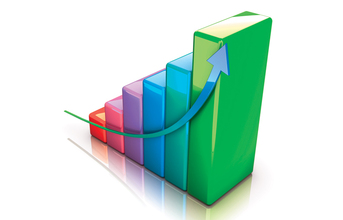
The health of the Indian manufacturing sector strengthened further in February, with a sharp and accelerated increase in sales boosting growth of output and employment. There was a solid rise in input buying and a modest accumulation in preproduction inventories, but stocks of finished goods decreased as firms utilised them to fulfil orders.
Rates of both input cost and output charge inflation remained subdued by historical standards, despite picking up from January.
At 54.3 in February, up from 53.9 in January, the Nikkei India Manufacturing Purchasing Managers' Index® (PMI®) reached a 14-month high. The latest figure was consistent with a robust improvement in business conditions that was stronger than seen on average over the 14-year survey history.
Amid reports of successful advertising efforts, supportive government policies and strengthening
demand conditions, inflows of new work at Indian goods producers continued to expand during February. The increase was the sixteenth in as many months and the most pronounced since October 2016.
Growth of total order books was supported by gains from international sources, as seen by a marked and accelerated upturn in new export work. A number of panellists indicated the acceptance of bulk orders from clients in key export destinations. Manufacturing output rose at the quickest rate since December 2017, boosted by strong inflows of new business, technological progress, beneficial public policies and positive market conditions.
Despite the uptick in production volumes, holdings of finished goods declined again. Moreover, the pace of depletion accelerated from January and was solid overall. Survey members indicated that stocks were utilised to fulfil order requirements.
Conversely, pre-production inventories increased in February for the twelfth month in a row. Data implied that this occurred due to ongoing growth of input buying. Quantities of purchases expanded solidly, and at a rate similar to January's 13-month high. Meanwhile, job creation was sustained, taking the current spell of growth to 11 months. Moreover, the upturn was the joint-quickest in over one year. Input costs increased, with firms citing higher prices for iron, steel, chemicals, plastic, tobacco and tools.
Despite quickening to a three-month high, the rate of inflation was much weaker than its long-run average. Companies suggested that relatively subdued cost pressures stemmed from lower fees for aluminium, copper, synthetic rubber, cotton and gas. Similarly, the rise in factory gate charges was weak in the context of historical data. Suppliers' delivery times where broadly unchanged in February, as signalled by the respective index posting close to the 50.0 no-change mark. Concurrently, manufacturers indicated that their own backlogs rose due to delayed payment from clients in the public and private sectors.
Commenting on the Indian Manufacturing PMI survey data, Pollyanna De Lima, Principal Economist at IHS Markit and author of the report, said: "The Indian manufacturing sector made further progress midway through the final quarter of FY18, building on the accelerated upturn noted in PMI at 14-month high as increases in sales, output and employment accelerate January. Sharper growth in production and sales were matched by the establishment of new jobs. The upturn in employment was one of the best seen for six-and-a-half years, as goods producers sought to expand output capacities to meet strengthening demand from both domestic and external sources.
"The survey results suggest that manufacturing will likely provide a stronger contribution to overall economic growth in the final quarter, provided that March's figures stay on this favourable path. For FY19, IHS Markit has revised higher its GDP growth forecast, from 7.0% to 7.1%, amid the announcement of fiscal stimulus for the new interim budget and the policy rate cut announced in February."
End
Sources: Nikkei, IHS Markit.


























